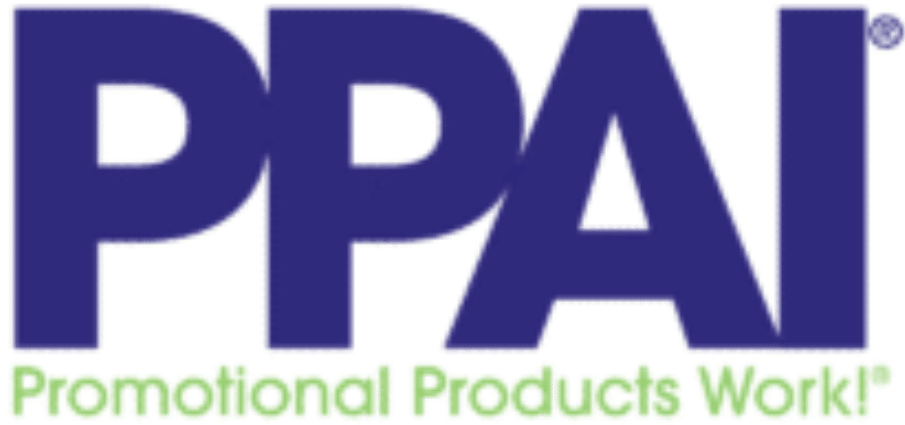
Introduction
Promotional products are a vital part of marketing, but their packaging often contributes significantly to environmental degradation. PPAI developed this guide to provide practical steps for distributors and suppliers to minimize plastic and overall waste in packaging, enabling members to directly contribute to a more sustainable future for our industry.
Extended Producer Responsibility, or EPR, laws, have been enacted in five U.S. states and all but three Canadian provinces. Reducing your packaging is a good way to prepare for compliance as these laws take effect and spread to more states.
Understanding The Problem
Key Facts:
- Plastic Packaging: Accounts for roughly 40% of plastic usage globally, a significant portion of which ends up as waste.
- U.S. Waste Statistics: In 2018, containers and packaging contributed 82.2 million tons of municipal solid waste in the U.S.
Environmental Impact:
- Plastic: Takes centuries to decompose, breaking down into microplastics that infiltrate ecosystems and harm marine life.
- Paper: Production is highly water-intensive and contributes to deforestation.
- Styrofoam: Non-biodegradable and releases toxic chemicals, furthering environmental harm.
Sustainable Packaging Alternatives
Recyclable Materials:
- Post-Consumer Recycled Plastics: Reduces reliance on virgin plastic, lowering environmental impact.
- Aluminum: A highly recyclable material with a smaller environmental footprint.
Reusable Solutions:
- Fabric Pouches: Made from cotton or jute, these pouches are sturdy and reusable.
- Reusable Boxes: Designed for multiple uses, encouraging customers to keep and reuse them.
Innovative Materials:
- Mushroom Packaging: Made from mycelium and agricultural waste; fully biodegradable and compostable.
- Seaweed-Based Packaging: Edible and compostable, providing an innovative alternative.
Biodegradable and Compostable Options:
- PLA (Polylactic Acid): A biodegradable plastic made from renewable resources like corn starch.
- PHA (Polyhydroxyalkanoates): A bioplastic produced through microbial fermentation; completely biodegradable
Best Practices For Distributors And Suppliers
Implementing sustainable packaging requires adopting best practices across every step of the supply chain:
- Choose Sustainable Packaging Suppliers: Collaborate with suppliers who prioritize sustainable materials and practices.
- Focus on Recyclable Options: Select packaging widely accepted as recyclable, such as recycled paper.
- Reduce Packaging Size and Weight: Optimize design to minimize materials, which also reduces freight costs.
- Implement Return and Reuse Programs: Encourage customers to return packaging for reuse, creating a circular approach.
- Encourage Bulk Shipping: Minimize individual packages by shipping in bulk wherever possible.
Implementing Changes In Your Business
Conduct a Packaging Audit: Assess your current materials and processes to identify opportunities for improvement. Analyze design, material sources and recycling potential to uncover areas for enhanced sustainability.
Set Waste Reduction Goals: Define measurable goals for reducing waste, and track your progress with tools like the Footprint Tracker.
Train Staff: Empower employees to participate in sustainable practices by providing training on waste reduction, recycling and responsible packaging.
Communicate Changes: Share your sustainability efforts with clients and stakeholders. Highlighting success stories inspires others and fosters open dialogue about challenges and solutions.
Regulatory And Certification Information
Regulations:
- FTC Green Guides: Guidelines for environmental claims in marketing.
- ISO Standards, specifically ISO 18601 to ISO 18606: International standards for packaging and the environment. There are consultants and certification bodies that can assist you in implementing ISO standards.
EPR Laws:
- Extended Producer Responsibility policies & programs: Stay informed on how your responsibilities surrounding packaging may shift with new bills being signed into laws; the Circular Action Alliance and the Product Stewardship Institute are both good resources for this.
Certifications:
- FSC (Forest Stewardship Council): Ensures products come from responsibly managed forests. Includes Chain of Custody certification for any company selling a product with an FSC logo and claim.
- Cradle to Cradle: Certifies products for safety and environmental impact.
- BPI (Biodegradable Products Institute): Certifies compostable products.
Case Studies
Success Stories:
- Google’s Sustainability Story: Tackling Single-Use Plastics, How 5 Innovative Companies Rise to the Challenge
- WWF’s Blueprint for Credible Action on Plastic Pollution: Demonstrates effective waste reduction strategies.
Additional Resources
- Sustainable Packaging Coalition’s 5 Principles of Sustainable Packaging
- US Plastics Pact
- Walmart’s Sustainability Packaging Solutions & Recycling Playbook
- Sustainability Consortium’s KPI Guidance for Packaging
- Plastic IQ, a Circular Solutions Tool for Plastic Packaging
- ISTA’s Responsible Packaging by Design
- Google’s Plastic Free Packaging Design Guide
Conclusion
Reducing packaging waste benefits the environment and enhances your brand’s reputation. By adopting the practices in this guide, distributors and suppliers can significantly impact sustainability. Teamwork makes the dreamwork – collaboration is key. Start today with small steps, they all add up and together we can make a difference.
© 2024 Promotional Products Association International (PPAI). This information is furnished by PPAI for educational and informational purposes only. PPAI makes no and expressly disclaims any and all representations and warranties, express or implied, including any warranty of fitness for a particular purpose and/or statements about specific dates, coverage, application or otherwise. Users are advised to consult with appropriate legal counsel or other professional about the specific application of the law or this information to the user’s business and products.
